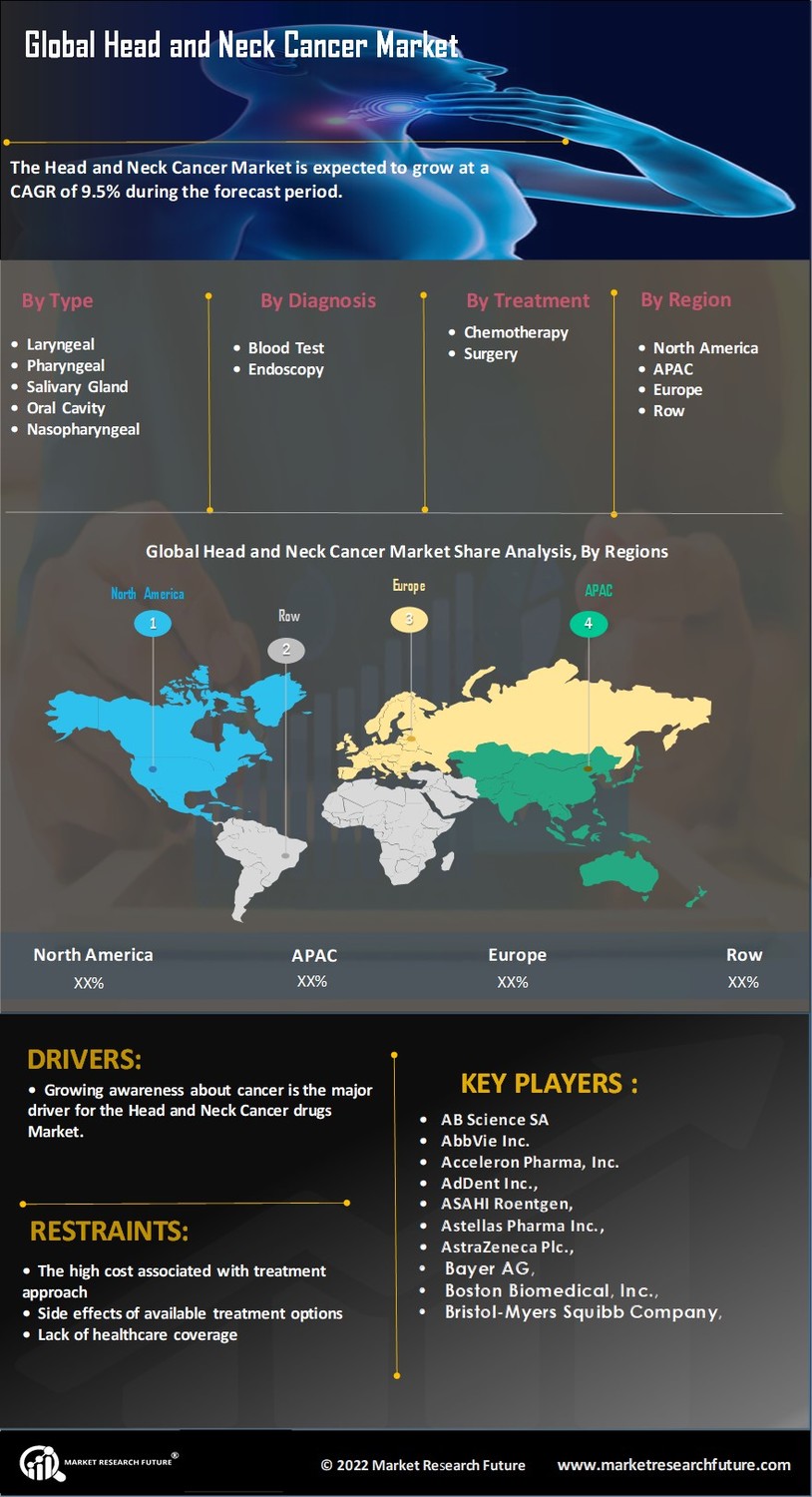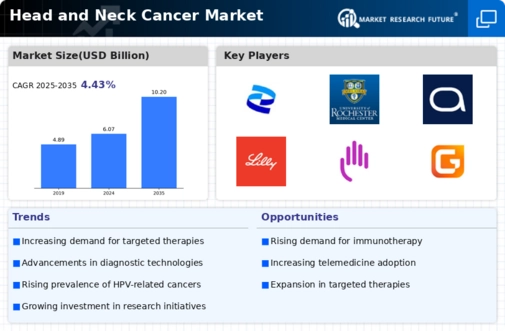Advancements in Treatment Modalities
The Head and Neck Cancer Market is witnessing a surge in innovative treatment modalities, including immunotherapy and targeted therapies. These advancements are reshaping the therapeutic landscape, offering patients more effective options with potentially fewer side effects. For instance, the introduction of immune checkpoint inhibitors has shown promising results in clinical trials, leading to increased survival rates. The market is projected to grow as these therapies gain regulatory approvals and become more widely adopted. Furthermore, the development of personalized medicine approaches is likely to enhance treatment efficacy, catering to the unique genetic profiles of patients. This trend not only improves patient outcomes but also drives investment in research and development within the Head and Neck Cancer Market.
Investment in Research and Development
Investment in research and development is a pivotal driver for the Head and Neck Cancer Market. Pharmaceutical companies and research institutions are increasingly allocating resources to explore novel therapies and improve existing treatment protocols. This focus on R&D is likely to yield breakthroughs in understanding the molecular mechanisms underlying head and neck cancers, leading to the development of more effective treatment options. Additionally, collaborations between academia and industry are fostering innovation, which may accelerate the introduction of new therapies into the market. As the landscape of head and neck cancer treatment evolves, sustained investment in R&D will be essential for addressing unmet medical needs and enhancing patient care within the Head and Neck Cancer Market.
Technological Innovations in Diagnostics
Technological innovations in diagnostic tools are transforming the Head and Neck Cancer Market. Advanced imaging techniques, such as PET-CT scans and MRI, are enhancing the accuracy of cancer detection and staging. These technologies enable earlier diagnosis, which is crucial for improving treatment outcomes. Moreover, the integration of artificial intelligence in diagnostic processes is streamlining workflows and increasing efficiency. As these technologies become more accessible, healthcare providers are likely to adopt them, leading to a more proactive approach in managing head and neck cancers. The increased accuracy in diagnostics not only benefits patients but also drives the demand for subsequent therapeutic interventions within the Head and Neck Cancer Market.
Growing Incidence of Head and Neck Cancers
The rising incidence of head and neck cancers is a critical driver for the Head and Neck Cancer Market. According to recent statistics, the prevalence of these cancers has been increasing, particularly among certain demographics, such as older adults and individuals with a history of tobacco and alcohol use. This trend is expected to continue, leading to a higher demand for diagnostic and therapeutic solutions. The World Health Organization has reported that head and neck cancers account for a significant percentage of all cancer cases, which underscores the urgency for effective treatment options. As awareness of risk factors and symptoms increases, more individuals are likely to seek medical attention, further propelling market growth.
Rising Awareness and Education Initiatives
Rising awareness and education initiatives regarding head and neck cancers are significantly influencing the Head and Neck Cancer Market. Public health campaigns aimed at educating individuals about risk factors, symptoms, and the importance of early detection are gaining traction. These initiatives are likely to lead to increased screening and earlier diagnosis, which can improve treatment outcomes. Furthermore, healthcare professionals are increasingly emphasizing the need for patient education, which empowers individuals to take charge of their health. As awareness grows, the market may experience a surge in demand for both diagnostic and therapeutic solutions, ultimately contributing to the overall growth of the Head and Neck Cancer Market.


















Leave a Comment